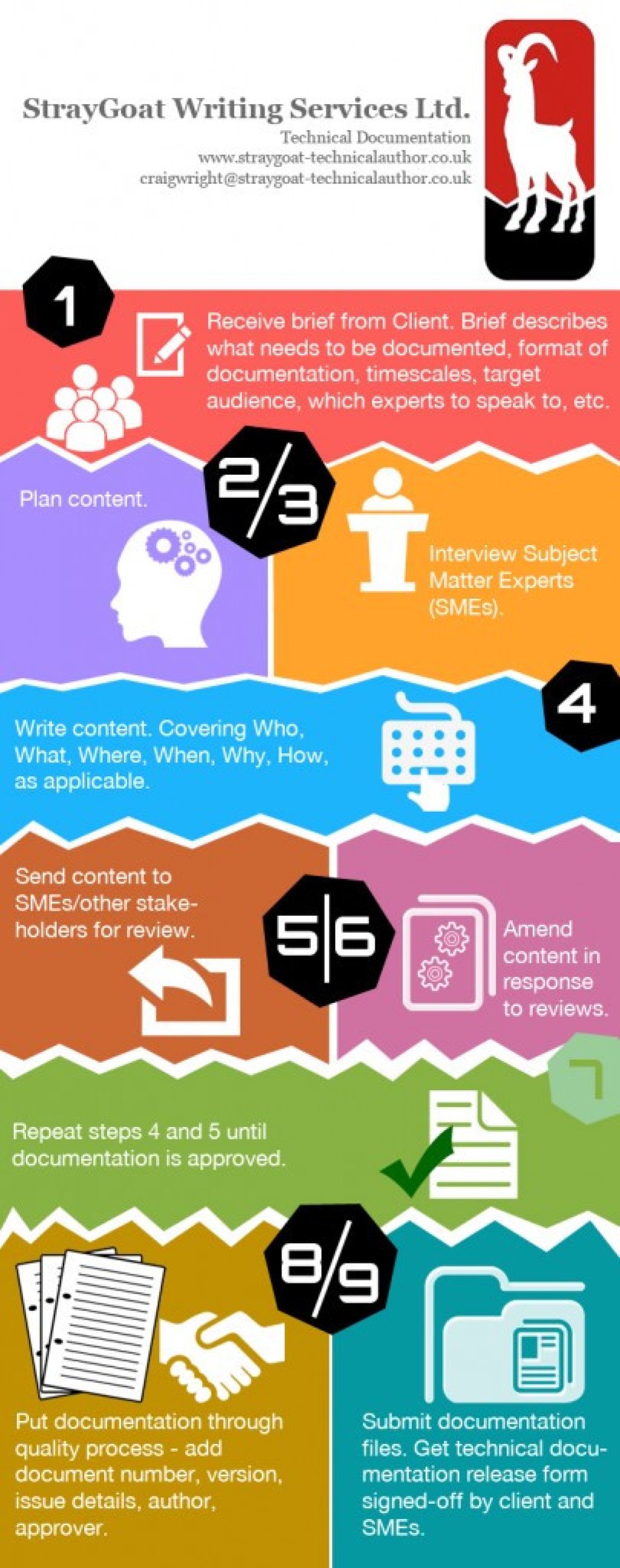A client once asked me to create a process for technical documentation. They wanted something simple to get an idea of what is involved.
I came up with the basic procedure and hired a graphic designer to create the infographic you see below (unfortunately, compressed!).
The process I worked to at that point in time was:
-
Receive brief. Discuss timescales, who to contact, target audience, and the other basics.
-
Plan the content. This is where I'll research the audience, figure out their needs, and plan the structure of the document.
-
Interview the subject matter experts. Get a demo if possible, figure out how the product works and what users will use it for.
-
Create the content, making sure to address user needs. Also try to keep the information architecture well organised.
-
Send the content to stakeholders for review. Ideally a mix of subject matter experts and customer-facing staff or even real customers. While this is going on, I'll get started on my next piece of work.
-
Make changes to the content based on reviews. Sometimes this can involve chatting with the reviewer again or even writing a specific section together.
-
Repeat the review and update process until we are happy it meets the needs of users.
-
Add any details that are needed for quality control and standards.
-
Submit documentation for publishing. Get sign-off from client.
A process for technical documentation (infographic)
The following infographic shows the typical process I follow as a technical author. It has applied when working on software and hardware, although it does take a 'best case scenario' approach. In reality, there are often changes to the brief in between later stages.

Looking to Hire a Technical Documentation Specialist?
With over 25 years' experience as a technical writer, a degree in Technical Communication, and expertise in a wide range of technical writing tools, I could be just the man for your documentation project. For more details, get in touch.

